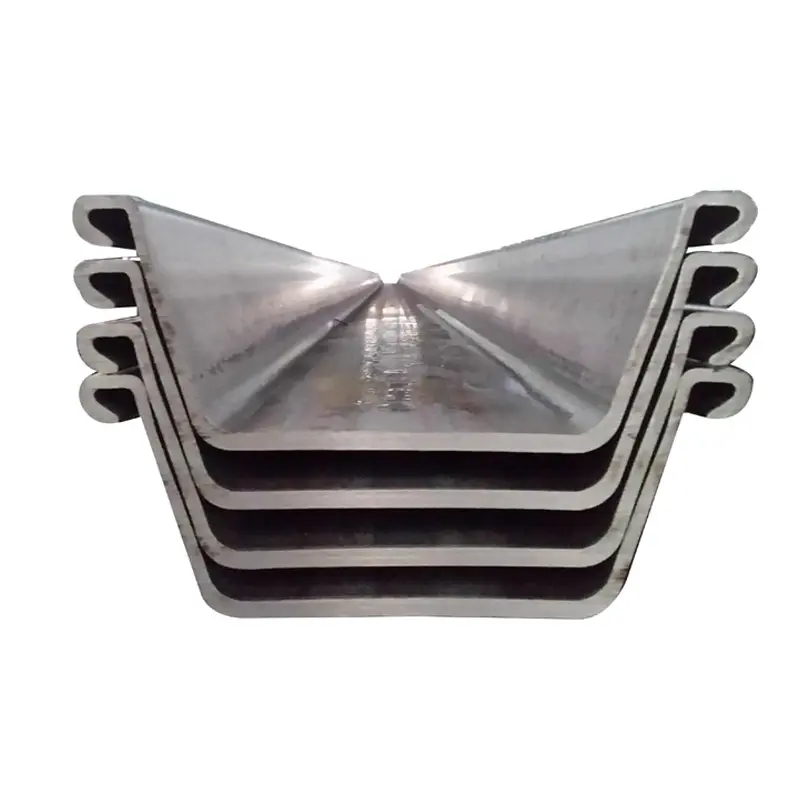Hot rolled steel sheet pile is produced through a high temperature manufacturing process, where steel billets are heated above their recrystallization temperature (typically 1,100–1,300°C) and rolled into specific profiles using powerful mill stands. This process results in sheet piles with excellent mechanical properties, including uniform grain structure, high ductility, and improved resistance to impact loads. Common materials for hot rolled piles include carbon steel grades like Q235, Q345, and ASTM A36, which undergo controlled cooling after rolling to achieve desired strength toughness balance. Hot rolled sheet piles are available in a variety of profiles, including U type, Z type, and straight web, with thicker wall sections suitable for heavy duty applications. The key advantage of hot rolling is the ability to produce large dimension piles with consistent mechanical properties throughout the section, making them ideal for deep excavations, marine structures, and seismic zones. Manufacturing involves multiple rolling passes to shape the steel into the desired profile, followed by cutting to specified lengths and optional surface treatments like galvanization or painting. Quality control includes chemical analysis of raw materials, mechanical testing of coupons (tensile, yield, impact tests), and ultrasonic testing for internal defects. Hot rolled sheet piles are installed using heavy machinery such as hydraulic impact hammers, which can drive them into dense soils or partially rocky substrates that would damage cold formed piles. Engineering applications include bridge abutments, port breakwaters, and industrial foundations, where their high load bearing capacity and resistance to cyclic loading are critical. International standards like API Spec 20A and GB/T 20933 govern hot rolled sheet pile production, ensuring compliance with global quality and safety requirements. While hot rolling requires significant capital investment in mill equipment, the resulting products offer superior performance in harsh environments compared to cold formed alternatives. Ongoing advancements in hot rolling technology focus on energy efficient processes and the production of advanced high strength steel (AHSS) sheet piles, combining reduced weight with enhanced durability for next generation infrastructure projects.


